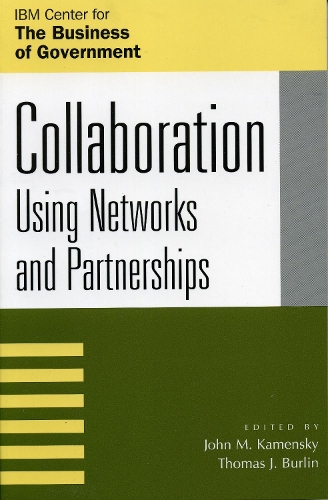
Collaboration: Using Networks and Partnerships
(Paperback)
Publishing Details
Collaboration: Using Networks and Partnerships
By (Author) John M. Kamensky
Edited by Thomas J. Burlin
Contributions by Mark A. Abramson
Contributions by Robert Agranoff
Contributions by Xavier de Souza Briggs
Contributions by Samuel M. DeMarie
Contributions by Elaine C. Kamarck
Contributions by Robert Klitgaard
Contributions by John W. Scanlon
Contributions by William M. Snyder
Bloomsbury Publishing PLC
Rowman & Littlefield Publishers
15th March 2004
United States
Classifications
Professional and Scholarly
Non Fiction
352
Physical Properties
Paperback
400
Width 164mm, Height 227mm, Spine 25mm
626g
Description
As government faces more complex problems, and citizens expect more, the way government delivers services and results is changing rapidly. The traditional model of government agencies administering hundreds of programs by themselves is giving way to one-stop services and cross-agency results. This translation implies collaboration--within agencies; among agencies; among levels of governments; and among the public, private, and nonprofit sectors. The first part of this book describes what networks and partnerships are. The second part presents case examples of how collaborative approaches have actually worked in the public sector, when they should be used, and what it takes to manage and coordinate them.
Reviews
Those working at the local level will recognise Klitgaard and Treverton's assertion that we are entering an era of 'hybrid governance' where the lines between the public, private, and voluntary sectors are fast eroding. This volume is a timely addition to our toolkit for managing that acceleration. * Local Government Studies *
Author Bio
John M. Kamensky is associate partner for the managing for results practice of IBM Business Consulting Services and senior fellow for the IBM Center for the Business of Government. Thomas J. Burlin is partner, U.S. Federal Industry and Global Government Leader, IBM Business Consulting Services.
